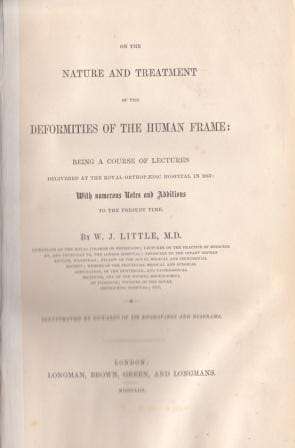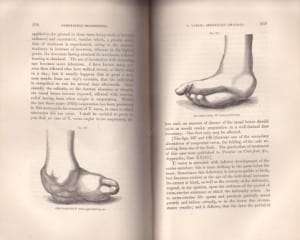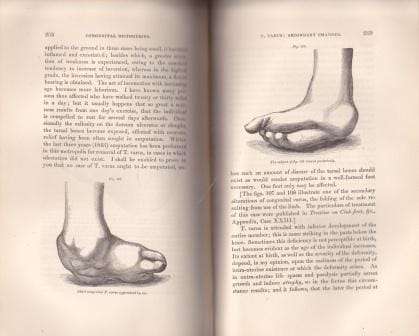





On the Nature and Treatment of the Deformities of the Human Frame. - Little, W.J.
Check my rate
| Main centres: | 1-3 business days |
| Regional areas: | 3-4 business days |
| Remote areas: | 3-5 business days |






| Main centres: | 1-3 business days |
| Regional areas: | 3-4 business days |
| Remote areas: | 3-5 business days |
First edition of this important work. Re-bound in a plain green cloth binding, with marbled endpapers and gilt titles to the spine. A piece of the original yellow end paper remains, with the following inscription: ' Samuel Ingall Eq. With the best regards of the author'. Ingall's bookplate also loosely inserted. Stamp and name to the half title. The re-binding of this book has left a slight wrinkle to the text block. x (ii), 412, (2)pp. Little (1810-94) was a member of the Royal College of Surgeons, and founded the Royal Orthopaedic Hospital of London. As a youth he was an apothecary's apprentice, surrendering his indentures at the age of 18 and entering medical school at the London Hospital. He was admitted to the Royal College of Surgeons in 1832. Little himself was a sufferer of a deformity in his left leg due to polio. This necessitated the use of a brace and obviously spurred his interest in finding a cure for such ailments. Little was one of the first to bridge the gap between neurology and orthopaedics, and his important work continues to impact both of these fields, including the fact of continually-increasing cooperation between orthopaedic surgeons and neurosurgeons in today's management of spastic cerebral palsy and similar neuromuscular disabilities. This landmark work, Little first described pseudo-hypertrophic muscular dystrophy, preceding Guillaume Duchenne's paper on the same condition by eight years. (Garrison and Morton 4329)
Publisher: Longman, London
Date Published: 1853, first edition
Condition: Very good
Binding: re-bound